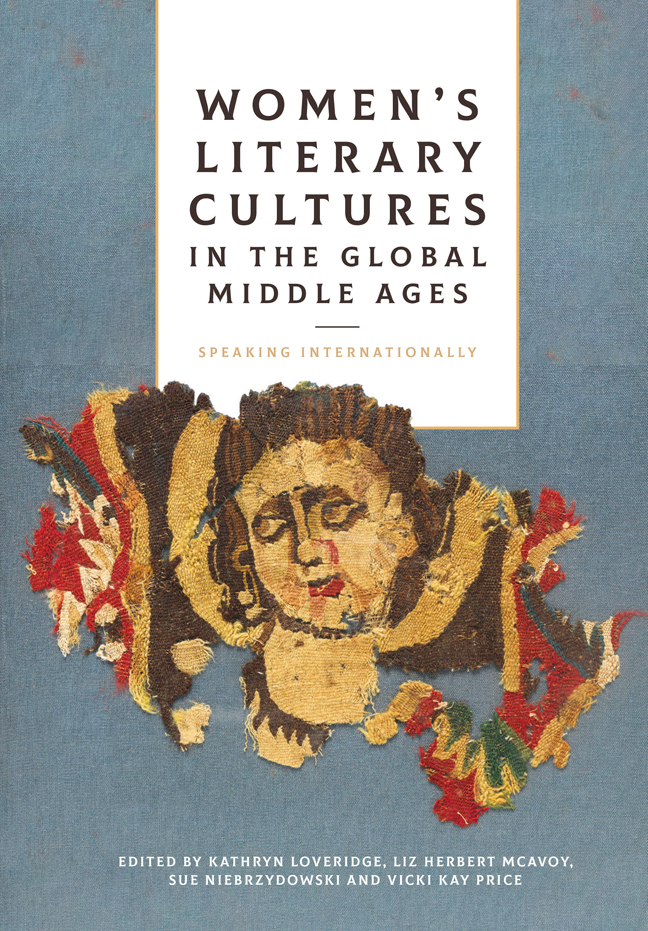Book contents
- Frontmatter
- Contents
- Foreword
- Acknowledgements
- List of Abbreviations
- Book part
- 1 Comparison and Dialogue
- 2 Constructing Gender and Genre
- 3 Saintly Performance and Marian Piety
- 4 Evidence and the Archives: Revisiting and Reconsidering
- Afterword: Intersectionality and Coalitions
- List of Contributors
- Bibliography
- Index
- Gender in the Middle Ages
13 - ‘IC þæt Secgan Mæg’: Women, Song, Story, Presence
Published online by Cambridge University Press: 09 January 2024
- Frontmatter
- Contents
- Foreword
- Acknowledgements
- List of Abbreviations
- Book part
- 1 Comparison and Dialogue
- 2 Constructing Gender and Genre
- 3 Saintly Performance and Marian Piety
- 4 Evidence and the Archives: Revisiting and Reconsidering
- Afterword: Intersectionality and Coalitions
- List of Contributors
- Bibliography
- Index
- Gender in the Middle Ages
Summary
This essay examines texts written by, for, and about women from the tenth to the fourteenth centuries, principally in Old English, Welsh and Latin. The aim is to consider how women's voices are represented in literary and legal texts – well-known poems and lesser-known saints’ lives, borough records and accounts of canon law cases – to show that we can better appreciate and better engage with apparent silences or slight murmurs. Women are recorded as present, but saying nothing; or are profoundly active in their own stories, but only indirectly focused upon by the authors. Such silences include those that precede and follow moments of female articulation, and those that are introduced by medieval writers and by contemporary medievalists. It should be remembered that silences do not equate to silence itself; quietening or erasure of women's voices, opinions, and utterances happens through their omission and their being rendered inaudible by writers and keepers of record. The women were not, and are not, silent.
WOMEN'S VOICES: TIME AND KNOWING
Many qualities can be attributed to women's voices when they are recovered, as Diane Watt's magnificent new book amply demonstrates. In that study, Watt highlights the scholarship and artistic genius of pre-Conquest women in England and in continental Europe, often those whose names are already known to modern academics, but whose probable oeuvres and intellectual contributions have been elided or obfuscated by medieval writers, like Bede or Goscelin, and particularly by cultural historians in the last two centuries. Scrupulous excavation of shreds of evidence, together with pellucid speculation, result in Watt's convincing and sophisticated rehabilitation of a host of women authors, poets and thinkers from c. 650 to 1100.
Watt's work provides the impetus, the inspiration and the methodological model for the revitalisation of medieval women's history. But, additionally, Watt explicitly expresses her debt to women medievalists of the last half century, who themselves have sought to redress the imbalance in the scholarly and public understanding of women's significant societal and cultural roles and contributions in the pre-modern period. As Watt builds on her academic foremothers, so too do I, and I want to begin by first making some broader observations about women and stories: about women and collective memory. In the western medieval period, women are often associated with oral culture and the gathering of memory.
- Type
- Chapter
- Information
- Women's Literary Cultures in the Global Middle AgesSpeaking Internationally, pp. 243 - 260Publisher: Boydell & BrewerPrint publication year: 2023



